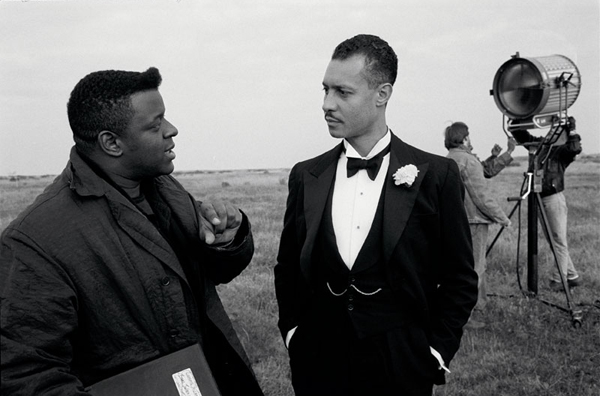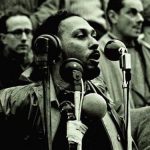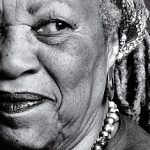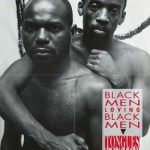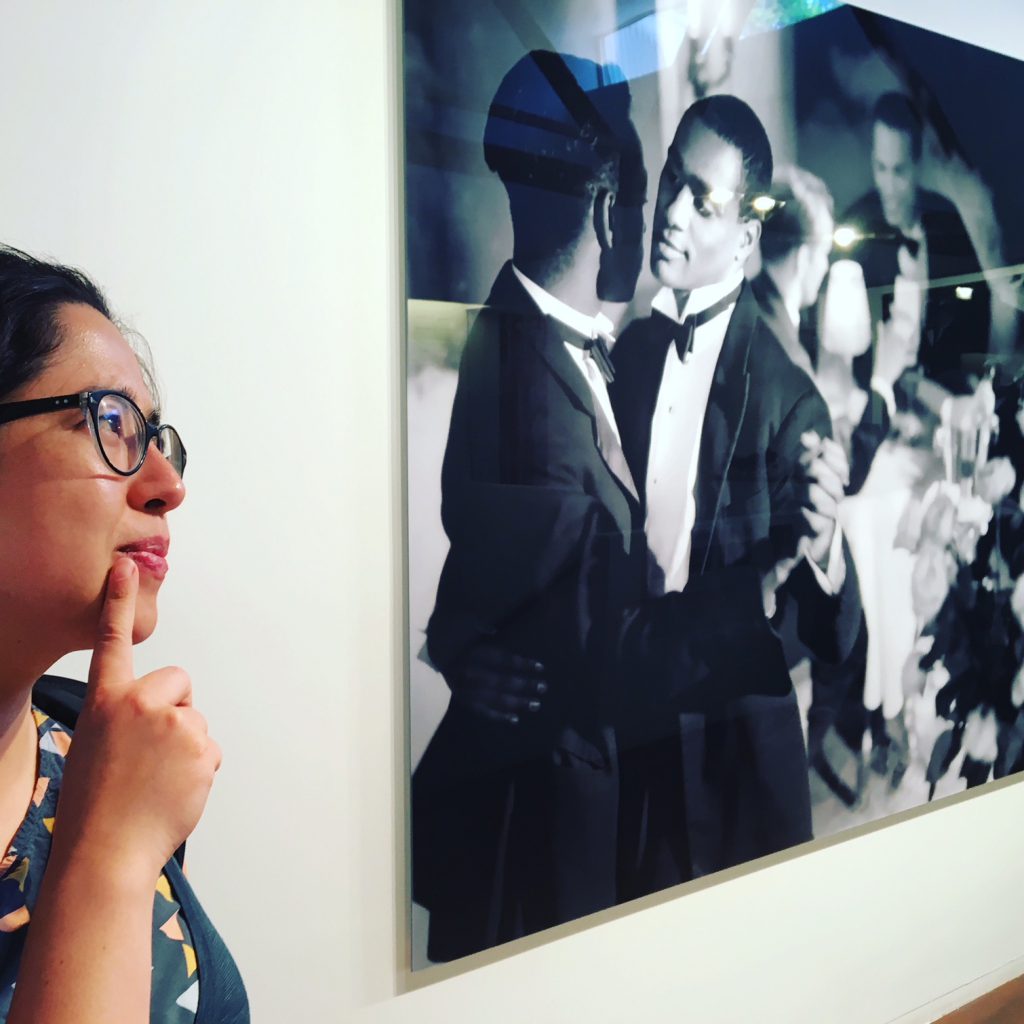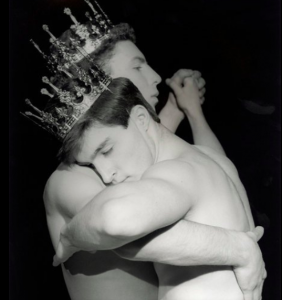Laury Windley of Lindy Shopper fame asked on fb today:
I wonder if there’s a correlation between the Internet making vintage and reproduction clothing more available to the masses and the increased incidence of people dressing up for swing dancing.
And I replied…
I think the internet definitely plays a part in shaping lindy hop fashion.
I started dancing in 1998 in Brisbane, a hot, humid sweat pit of a place that was cruel to anything vintage. I was wearing vintage before I started dancing… 60s vintage and punker fashion. But crimplene and sub-tropical lindy hop? No. But that’s 20s years ago, and mainstream fashion has changed a lot over that time.
I think a few things have shaped what people wear for lindy hop:
– Weather and climate.
In hotter climates we sweat more, and fabrics have to be able to handle that. So a wool suit isn’t often a dancer’s first choice. There simply isn’t that much vintage wear in Australia – because the climate (including the sun and sweat) destroyed it, and because of social history.
– Culture.
More importantly, 1930s and 40s fashion in Australia wasn’t like 30s and 40s fashion in the northern hemisphere. I imagine we could see some really interesting different regional vintage fashion in other scenes as well. Which of course makes me think: Korean dancers wearing 30s and 40s fashion is a whole other kettle of cultural fish. Looking at videos from Maputo (in Mozambique) lately, I see a blend of traditional fabrics (eg waxprints), vintage 30s, and modern aesthetic. And bare feet. All things that are particular to this community at this time and place. A pride in cultural heritage (waxprints), a nod to dance history (30s cuts and styles), and social context (bare feet influenced by the ‘traditional’ dance influences brought by pro Mozambique dancers to lindy hop). And that’s all before we get to bodily aesthetics.
– Dance culture.
I’ve noticed that if a lindy hop scene has members who travel a lot (ie they’re quite experienced dancers), the fashion tends more towards the ‘european or american vintage’ aesthetic. This is about individual dancers wanting to signal status/knowledge in what they wear.
Interestingly, we have a strong vintage/repro fashion scene in Sydney which crosses over with ‘swing dancing’ (not necessarily lindy hop). It’s not so great for dancing hardcore, but people live a hardcore vintage lifestyle. Chloe Hong‘s presence in Seoul does much the same. She gives us the incredible troupe uniforms (troupes are influencers!) and also that ubiquitous Whitey’s Lindy Hopper Big Apple tshirt reproduction. Both of which encourage a vintage fashion vibe. And it’s hardcore: male dancer might bring their suit to parties in a suit bag, then change in the on-site dressing rooms rather than risk them on the subway.
– Dancing.
Lindy hop has gotten a lot more athletic _generally_ than it was in the 2000s. Parachute pants are great for smoothy dancing, but a shorter skirt or more fitted trousers are better for lots of solo jazz, leaping about, etc. I’ve been most interested in the way men’s trousers taper more at the ankle to show off leet footwork in a way wide cuffs don’t.
All this athletic training has also changed professional or competition dancers’ physiology: more muscles, a greater range of movement = more care with fashion choices. A lovely 1940s dress is too precious to risk on a hardcore showcase routine with aerials.
– Gender.
We’ve seen changes in gender performance in the wider community since the 1990s and 2000s. There’s generally a greater emphasis on ‘strong’ bodies and muscle tone in mainstream media – women as well as men are into weights and resistance training in a new way. But at the same time, the more androgynous stylings of the 90s has given way to hyper-gendered styles today.
As Grey Armstrong says in that Obsidian Tea piece, this is not only about gender, but also about race, and as Shelby suggests, class. There’s a definite body type favoured by mainstream white culture, but also by lindy hop culture (which is after all a microcosm of the wider society).
Long, lean legs and buttocks, narrow busts and chests, long torsoes, long straight hair, etc etc etc.
Male lindy hoppers’ bodies are almost the same, except with shorter hair (male hair cuts!).
-> we see a very white, anglo-european body type here. It not only excludes black bodies, but also some asian phenotypes…basically anyone who’s not from this anglo-european background.
-> There’s also been a rise in what constitutes disordered eating dogma eating in lindy hop circles: ‘paleo’ ‘diets’, low-carb, high-protein, high-fat, etc etc etc. This in concert with obsessive exercise routines (remember when P90X was big?) are giving us a particularly worrying body type as a favoured aesthetic. Still very white, still relatively unattainable for most people.
The clothes that people are choosing emphasise these qualities. I wrote about the influx of high heeled shoes a while ago – and heels extend the lines of the leg to point the toe and create a very white, heteronormative feminine model. The more fitted skirt extends these straight lines. We see foundation garments becoming a very important part of many women dancers’ wardrobes: they constrain and flatten the body, erasing curves and rolls and dimpling of flesh to extend lines.
All of this actually constrains the body and limits a range of movement, not to mention comfort. Men may complain about the heat of a jacket while dancing, but it’s nothing compared to the discomfort of spanx, two pairs of stockings, underwire bras, a million bobby pins and a ton of makeup. Again, this is very much an ethnicised notion of bodily aesthetics with patriarchal effects.
It’s very _not_ like the west african aesthetics of early jazz dance.
– Fabrics.
Some really wonderful fabrics have become popular in m/s fashion over the past few years. There are some utterly amazing stretch cottons that look and breathe like cotton, but also have the stretch and longevity of a synthetic. Perfect for dancing. But this also changes the way garments wear and wear out. We can make clothes that behave in different ways – reproduce vintage styles in more athletic-friendly fabrics.
– The rise of repro fashion businesses.
This is another story about the internet. Pervasive internet access has enabled the rise of small business manufacturing models (via etsy etc), and the ‘bespoke’ trend in m/s culture has married perfectly with the aesthetics of vintage fashion. So we’re seeing repro businesses doing well online in the dance world and beyond. I think this interest in bespoke fashion works as a push back against fast-fashion, but also as a marker of class (it’s more expensive, and is often defended as being ‘better value’, even when the manufacturers are inexperienced craftspeople who might make things by hand but don’t have proper tailoring skills). This echoes Shelby’s earlier point about ‘respectability’ and race: dressing expensive suggests respectability and status.
I’ve been very interested in the way dancer-run businesses can target the nich dancer market and be sustainable. It works in bigger scenes like Seoul, but it’s also sustainable, via the internet, for a business based in Canberra to market to the international dance world.
– Youtube and social media.
And finally, access to the bodies of dancers all over the world via the internet has shaped fashion. We may have regional styles, but we also have Chloe Hong and Remix and sweet fades in every international lindy hop scene (where budgets allow). If a big name dancer wearing it at ILHC, then we’ll see it in local scenes soon after. Influencers r us.

